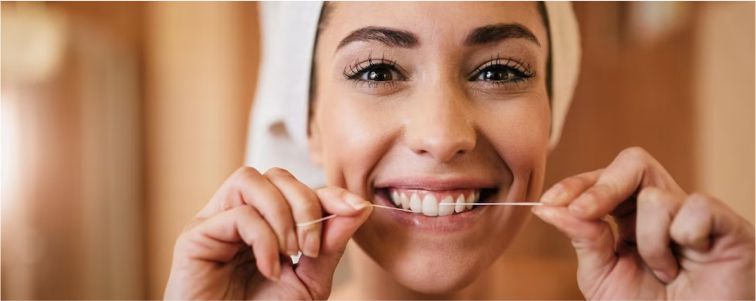Let’s celebrate this Women’s Day with a healthy habit and start with flossing for the perfect radiant smile.
We Indians surely love chai, pakoras and sticky Mithaai. But what lurks between our teeth after enjoying these treats? Food debris and bacteria, forming a plaque disaster! With such diet practices, brushing twice may not be enough.
What is flossing?
Flossing is the act of removing food particles and plaque build-up between your teeth using a thin, flexible thread called dental floss. It removes food debris, plaque and bacteria that get lodged between teeth, where your toothbrush can't reach. This simple step helps prevent several oral health problems.
Why should you start flossing today?
- Prevents cavities: Plaque build-up between teeth can lead to cavities, especially in hard-to-reach areas. Flossing removes this plaque, protecting your teeth from decay.
- Combats gum diseases: Plaque also contributes to gingivitis (inflammation of the gums) and, if left untreated, can progress to periodontitis (severe gum disease). Flossing helps keep your gums healthy by removing plaque and reducing inflammation.
- Fresher breath: Food particles trapped between teeth can cause bad breath. Flossing removes these particles, leaving your breath feeling fresh and clean.
- Boosts overall health: Recent studies suggest a link between poor oral health and chronic health conditions like heart disease and diabetes. Flossing contributes to good oral hygiene, potentially reducing the risk of these diseases.
- Preventing tartar build-up: Regular flossing prevents the formation of tartar, a hardened form of plaque. Tartar can only be removed by a dentist and may lead to more serious oral health issues if neglected.
How to start flossing?
Before you start flossing, here are some basic information to keep in mind:
1. Choose the right flossing tool
- String floss: Classic and affordable, comes in waxed or unwaxed options.
- Water flosser: Electric device using pressurized water for a refreshing clean.
- Floss picks: Convenient option with a handle and pre-threaded floss.



